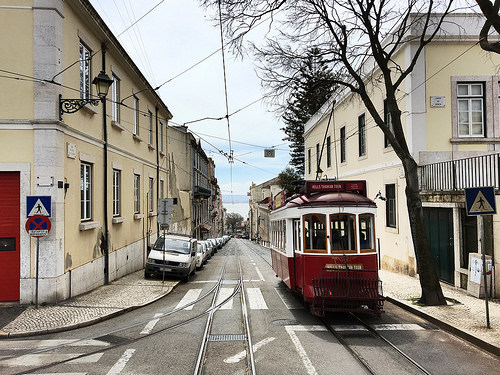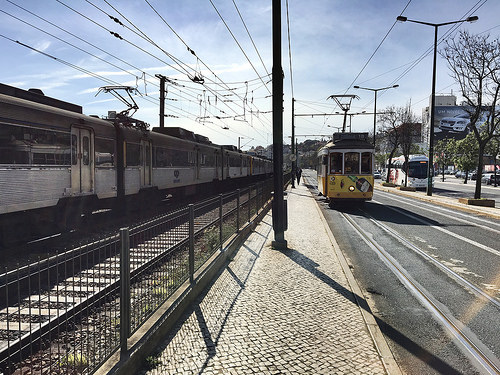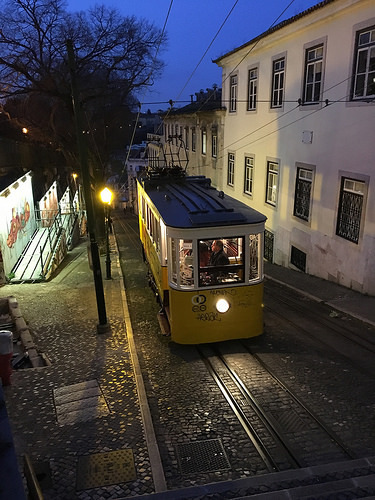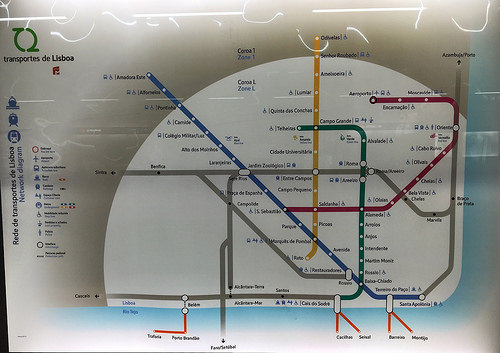Lisbon is a rail transit mecca
Lisbon has just about every type of rail transit out there. Streetcars, funiculars, a metro, and commuter rail all provide a dense, interconnected transit system for the Southern Europe metropolis.
Lisbon’s streetcars — trams, as they refer to them — act as both transportation for the city’s residents and a popular way for visitors to see the city, with streetcar line 28 connecting many of the main sights of the city’s old city.
Many of the streetcar lines share the city’s narrow streets with car traffic. However, some stretches have dedicated lanes, including along Avenue 24 de Julho, next to the commuter rail tracks approaching the Cais do Sodré railway station.
Complementing the streetcar network are three funiculars and an elevator that climb some of the city’s steep hills.
The Lisbon metro has four lines stretching 26.8 miles across the city and providing the backbone of the transit network.
Lisbon has two commuter rail operators: state-owned Comboios de Portugal (CP) and the private Fertagus line. While more frequent and metro-like than Washington DC’s commuter rail services, CP’s services are not as extensive as those in most European cities with overlapping lines connecting four terminals in central Lisbon and one south of the Tagus River with five different suburbs.
Fertagus provides the only commuter rail service that crosses the Tagus River, running on the lower deck of the 25 de Abril bridge.
Lisbon is a good example of how a dense transit network with a variety of interconnected modes can work.
The Washington region is slowly moving towards a similarly dense and varied network, with Metro forming the backbone and other modes like the Metroway bus rapid transit line Virginia, the DC Streetcar in the District and, when it opens, the Purple Line light rail in Maryland filling in the gaps and complementing Metro. However, we have a long way to go to match Lisbon’s network.
For more on transit developments in other cities and around the world, check out Greater Greater Washington’s articles about Adelaide, Cape Town, Dallas, Hartford, Johannesburg, Oakland airport, San Diego, and San Juan.






